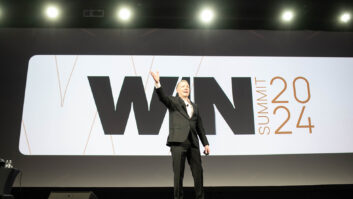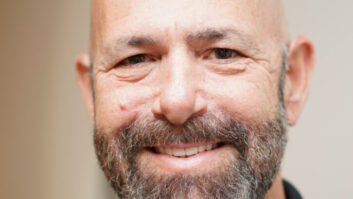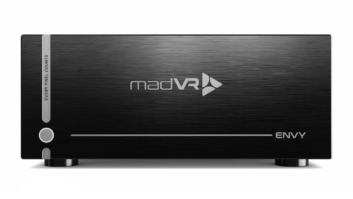It’s both the best of times and the worst of times for the nation’s top electronics and appliance buying groups.
First the good news: The plethora of exciting new consumer electronics products – particularly in high-margin, service-intensive areas such as home theater – are getting independent retailers juiced on the category for the first time in years.
What’s more, the ongoing diversification of buying groups into the field of furniture has succeeded at securing their members an additional stream of revenue and a steady source of profits.
But despite these balance-sheet bright spots, which have helped stem the recent rash of store closings, storm clouds are gathering along the industry horizon that are casting a shadow over independents’ prospects.
According to buying group executives, these challenges include the continuing devaluation of major appliances and certain CE products by manufacturers and retailers, and the escalating impact of the big-box category killers on availability of both customers and inventory.
“Manufacturers are closing their distribution centers and are reducing the number of retailers they’re going to service,” observed Ed Kelly, Nationwide TV & Appliances’ director. “Vendors want to ship tractor trailer-loads of product into the big guys’ warehouses – who they can count on to sell all of their production thanks to the thousands of new stores they open every year – and the independent dealer has no way to get inventory.”
While the trend first surfaced in consumer electronics, Kelly expects majap suppliers to soon follow suit, as they find it increasingly difficult to justify the expense of maintaining regional white-goods warehouses that service only 20% of their business.
“Vendors are either going to distributors or simply walking away from independent dealers,” he said. Although Nationwide is already supplied in part by such major distributors as Ingram and D&H, which “provide a real value and service,” Kelly argued that his members won’t be able to compete with the national chains if the group is forced to go through a two-step distribution process.
The corollary issue, said Bob Lawrence, executive director of Associated Volume Buyers, is the siphoning off of customers by the big-name national merchants. “Our biggest challenge,” he said, “is footprints in the store.”
Another sore spot for the industry’s independents is the falling price of white and brown goods. “The pricing continues to drop,” Lawrence said. “Whereas a dealer once made 25% on a $1,000 refrigerator, he’s now making 25% on a $700 refrigerator, and you may have a situation where dealers are selling themselves out of business. It’s a huge industry problem, and manufacturers have got to stop this price devaluation.”
Price compression is also problematic on the CE side, observed Roger Heuberger, executive director/COO of the Progressive Retailers Organization (PRO Group). “Why we’re selling DVDs for $299 that cost $238 when we’re nearly out of stock knocks me out,” he said.
To further complicate matters, these challenges come at a time of transition for three of the largest buying groups. While the MARTA Cooperative Of America continues its search for an executive director to succeed Jerry Dreyer, who left the post earlier this year, Saul Gold, NATM Buying Corporation’s first and only executive director, is stepping down in December after nearly 30 years on the job to make way for Conn’s VP Bill Trawick.
According to MARTA chairman Elmer Karl, his group is still “interviewing at this time,” making it unlikely that the directorship will be filled before the co-op convenes
for its biannual meeting June 2 in Denver.
By contrast, Key America is dispensing with the executive director’s role entirely. Following the departure of Mel Hunger in March to head up Nationwide’s regional NECO group, Key decided to split the job’s responsibilities between president Murray Provine, who handles vendor programs, and treasurer Karlh McCallister, who oversees accounting.
Looking ahead, Deryl Sewell, president of Key’s Southwest Co-op chapter, was enthusiastic about the near-term prospects for the group’s members. “Business in general is good in most areas,” he reported, “and we’re having a very strong resurgence back into electronics. That’s our focus because the independents have the time and expertise to explain the new technologies to consumers.”
At the same time, “we’re getting a lot stronger in furniture, particularly bedding,” Sewell continued. “We’re also making strides in upholstery. Furniture is a big volume category, and its margins are still holding as well.”
Encouraged by the rapid growth of its new Furniture Smart division, Nationwide has also jumped feet first into the category, and it’s back in the saddle on CE, a sector that had been eschewed for its eroding margins.
“It’s explosive, the most phenomenal opportunity of the past 10 or 15 years,” Kelly said of the new wave of CE products, including big-screen TVs and convergence gear. Plump margins aside, the higher-end gadgets will also give independents a solid head start over the superstores, which will be “narrow in the new technologies at first,” he said.
Meanwhile, to keep members sufficiently stocked despite pullbacks in dealer distribution, Nationwide now maintains six of its own warehouses throughout its geographic range. “Do we want to be in the distribution business?” asked Kelly. “We don’t have a choice.”
For AVB, home theater represents something of a dream category that brings together the best elements of furniture and high-end consumer electronics.
“In electronics, our push is in home theater,” Lawrence said. “You can fill a room, it eliminates shopping, and the furniture really fills out the sale.”
Still, most of AVB’s volume remains in appliances, which the group is attempting to temper by adding more upscale, and profitable, models to the mix.
To help counter the increased marketing and buying clout of CE superstores and home-improvement chains, AVB has recently forged international buying partnerships with the Cantrex group in Canada and the Expert consortium in Europe, and the group is pressing ahead with its Brand Source branding program for members.
The effort, akin to the “Ace is the place” hardware store campaign, is designed to develop “Brand Source. Your Neighborhood Expert” as a nationally recognized tag line and logo that will create consumer awareness while leveraging regional and national advertising cost efficiencies. The program, which includes exterior and in-store signage, is currently being tested in four member stores, Lawrence said.
On the product front, PRO Group also “tries hard to walk a line between volume and profitability,” said Heuberger. “We don’t chase volume, as that’s a margin trap, and fortunately of late, we’re getting a good mix of the two.”
For sheer volume, video has been the driver, he reported, while car navigation and high-end audio, including Dolby Digital 5.1 receivers, are the margin makers.
In our next issue, June 7: Taking A Stand On E-Commerce.













